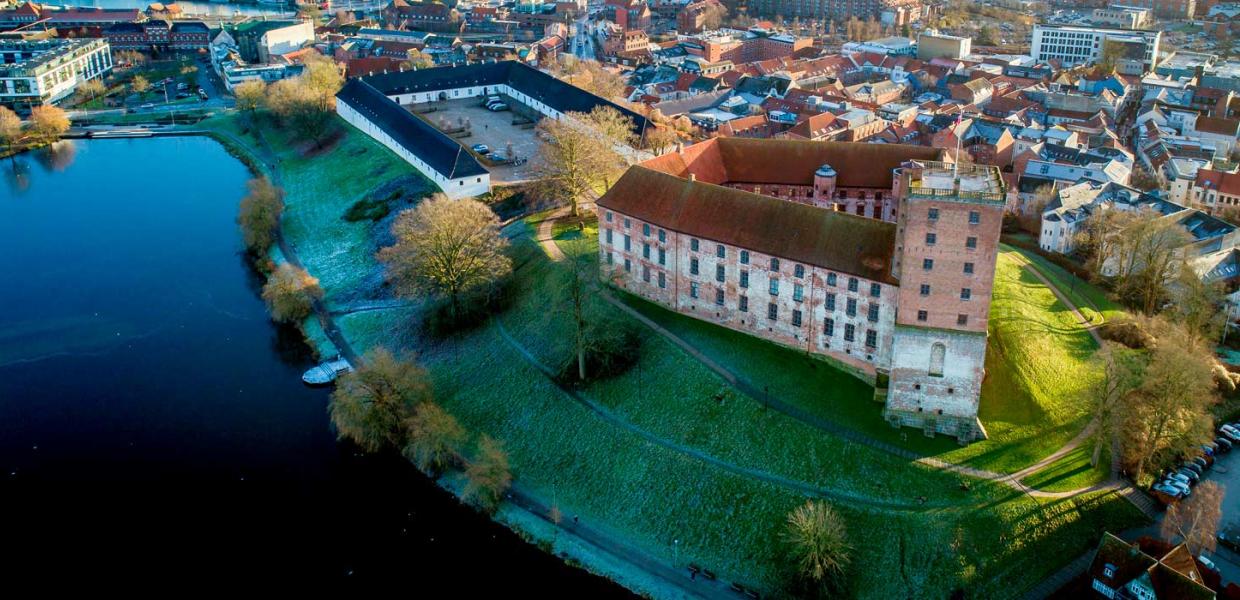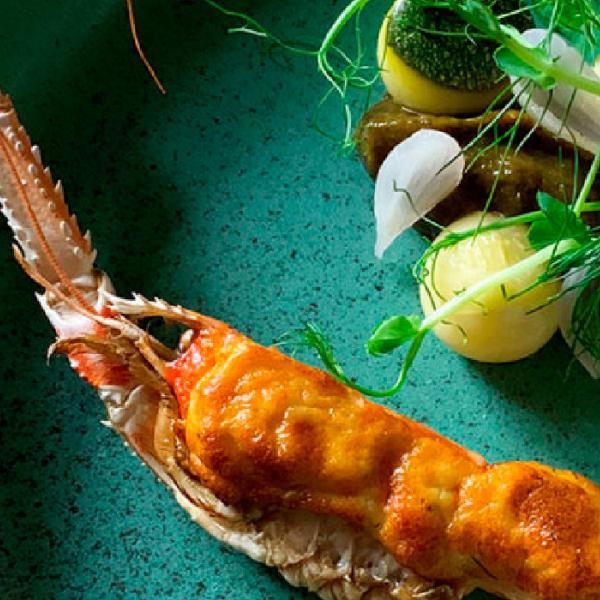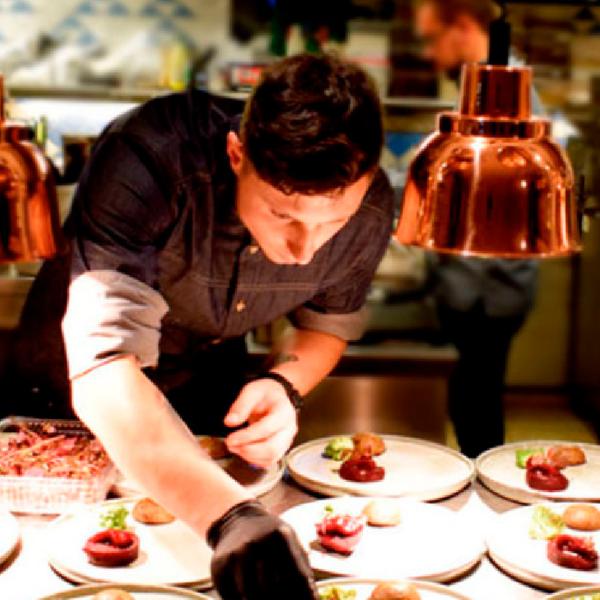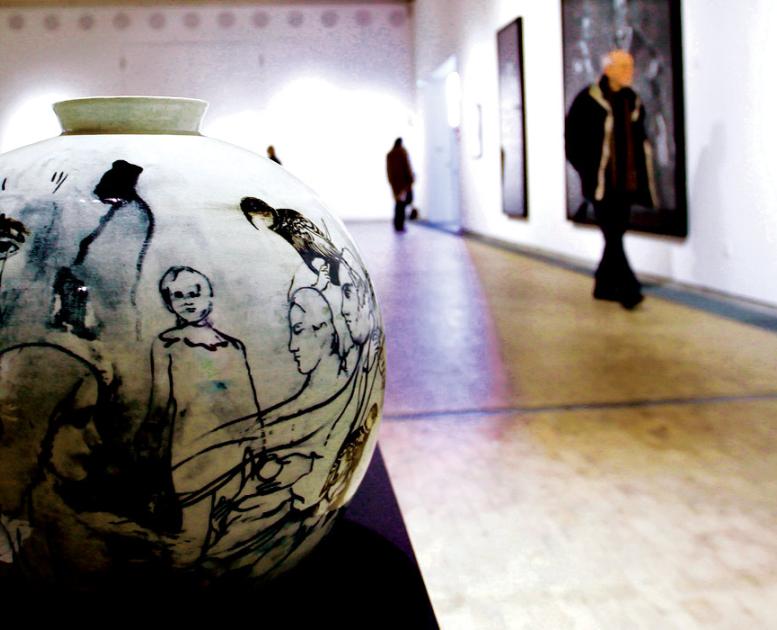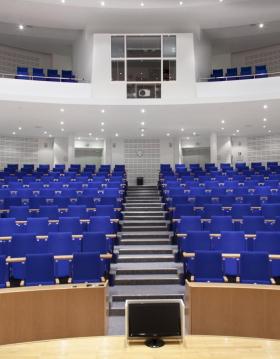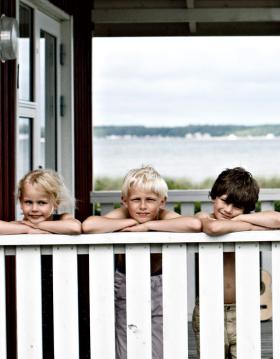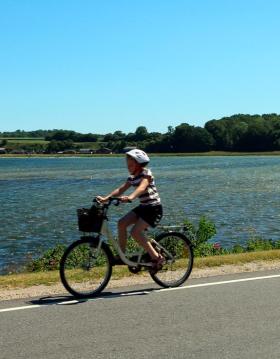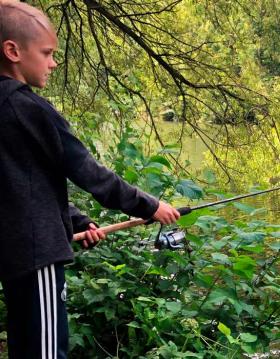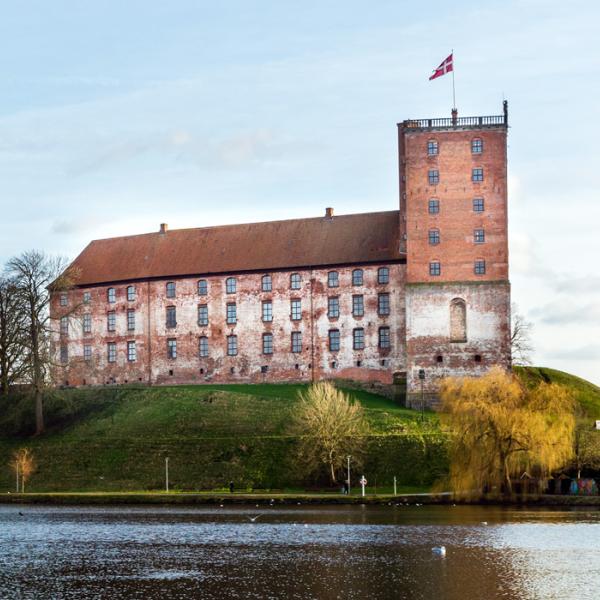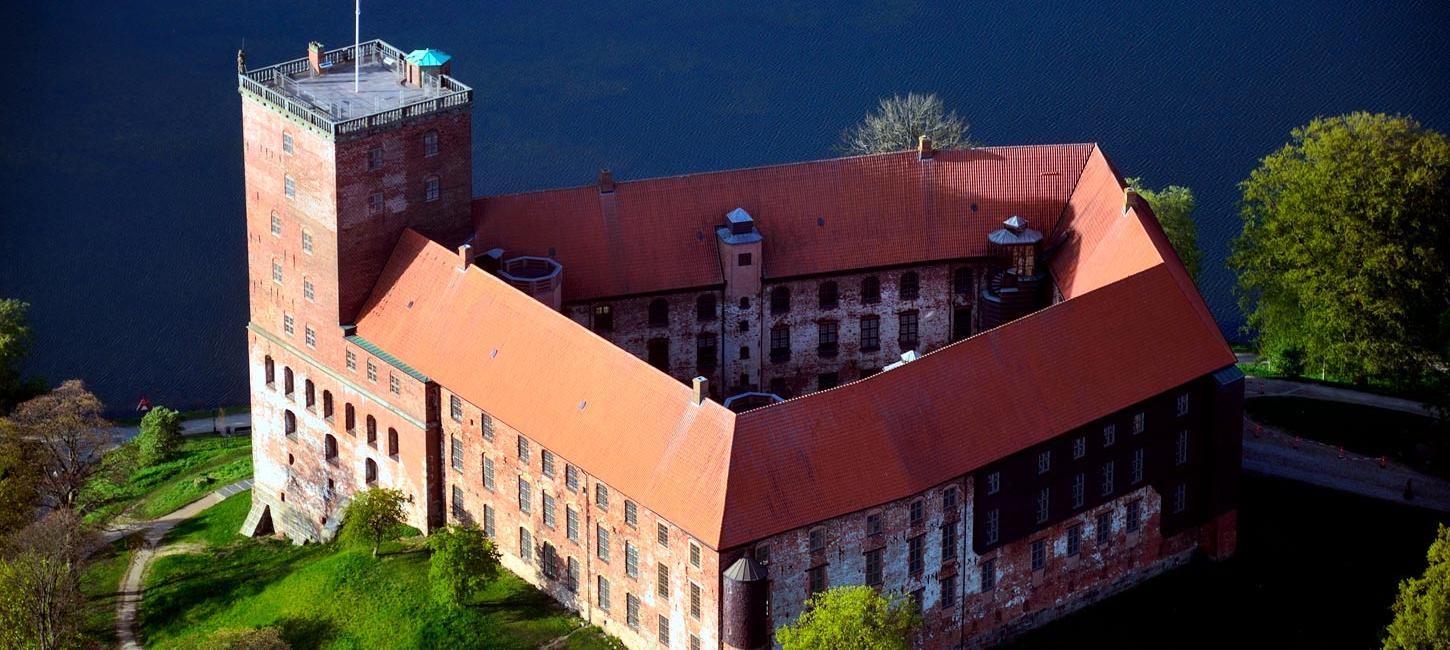
Koldinghus - The last royal castle of Jutland
Koldinghus is one of Denmark’s most iconic castles and a cultural landmark in the heart of Kolding. Once a royal residence, the castle is now home to a dynamic museum featuring permanent and temporary exhibitions, blending history, art and architecture.
Koldinghus has played an important role in Danish history for more than 750 years. For many years the castle stood as a border guard for Denmark. South of Kolding was the border with the Duchy of Schleswig. The castle has also served as the royal residence and as the seat of the local state administration.
Today, it’s a very special experience to get close to Kolding’s old royal castle. The castle is awe-inspiring with its location on the castle bank high above the city. And that was precisely the intention when Koldinghus was built in 1268 to guard the kingdom’s southern border.
Koldinghus was one of the country’s most important royal castles for centuries. It burnt down in 1808 during the billeting of Spanish troops and stood for almost 100 years as a romantic ruin until it was restored in 1976-93. Architects Inger and Johannes Exner came up with the ideas and lines. They chose to leave the ruin visible and instead used wood and steel in the load-bearing and visible structures. The result was deservedly recognised with the EUROPA NOSTRA award in 1993 and is a world-class attraction in its own right.
That’s why Koldinghus is a modern tourist attraction today, and the castle is part of the Royal Danish Collection, which also has visitor centres at Rosenborg and Amalienborg. At Koldinghus, you can experience a rolling programme of special exhibitions, family activities during all school holidays, concerts, lectures, a Christmas market and a royal costume workshop.
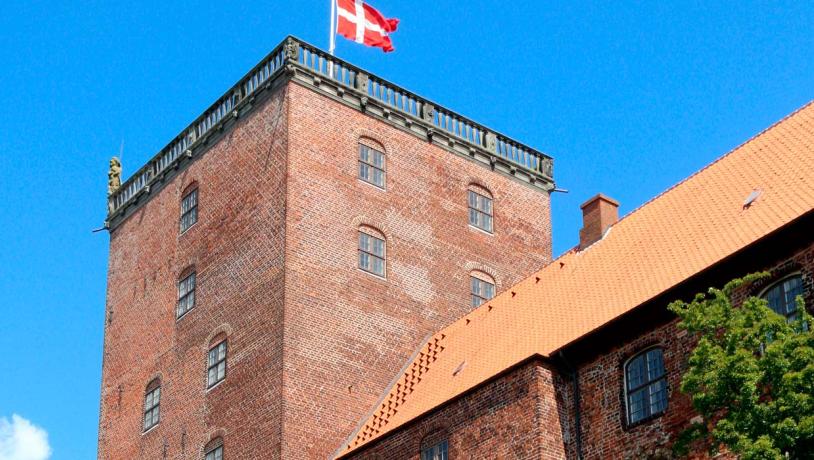
Photo:Visit Kolding
For centuries, Koldinghus was one of the country's most important royal castles. It burned down in 1808 during the accommodation of Spanish troops and stood as a romantic ruin for almost 100 years until it was restored from 1976-93. Architects Inger and Johannes Exner designed the restoration, choosing to leave the ruin visible while using wood and steel for the supporting and visible structures. The result deservedly received the EUROPA NOSTRA award in 1993 and is, in itself, a world-class attraction.
Today, Koldinghus is a modern tourist attraction and part of the Royal Collection, which also includes Rosenborg and Amalienborg. At Koldinghus, you can experience rotating special exhibitions, family activities during all school holidays, concerts, lectures, a Christmas market, and a royal dress-up workshop.
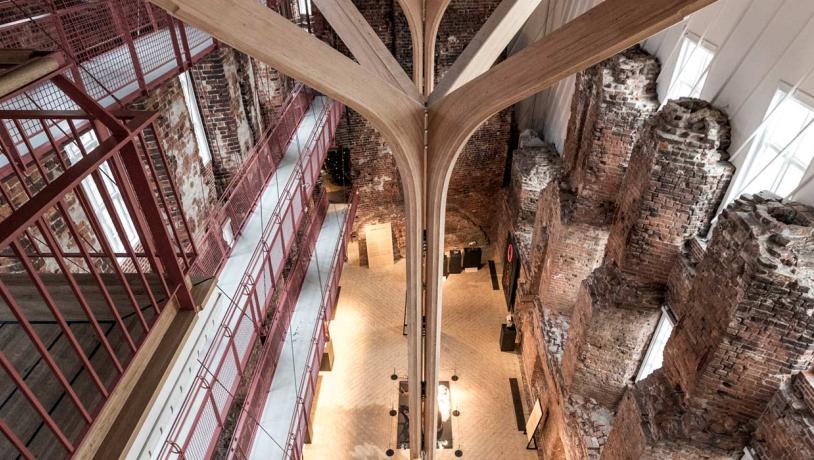
Photo:VisitKolding
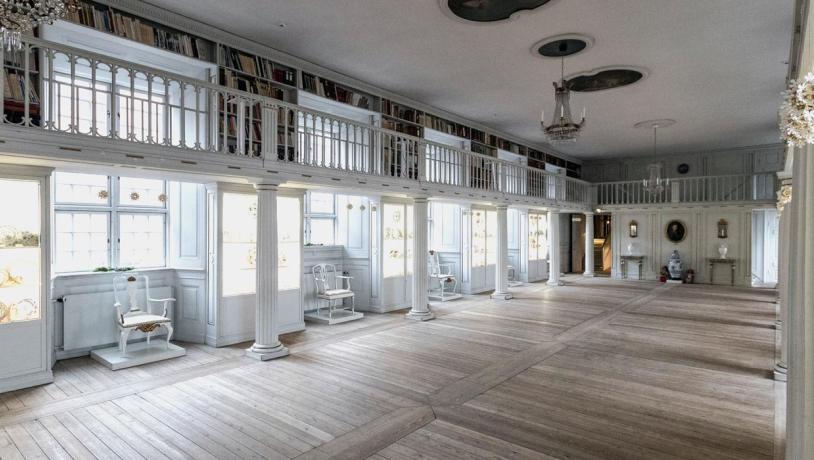
Photo:VisitKolding
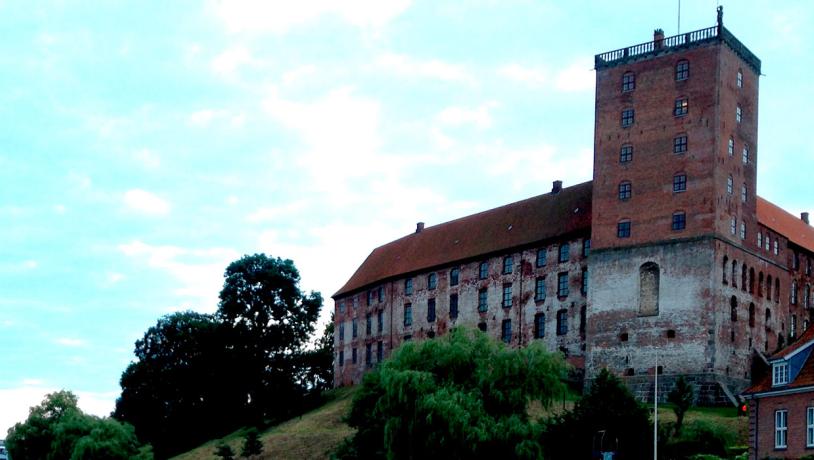
Photo:Visit Kolding
The Giant’s Tower takes its name from the 4 statues of giants from Greek and Roman mythology that stood atop the tower. Today, only Hercules remains.
Koldinghus for children
Become immersed in the past as you walk through the castle halls where Christian IV went to school as a child. During all school holidays, the castle has various activities for children with fun and creative workshops. Take a trip up the Giant’s Tower, where you can look out over Kolding from the top of Koldinghus. Maybe you are pretending to be a guard in the king’s army. See how far away you can spot the enemy.
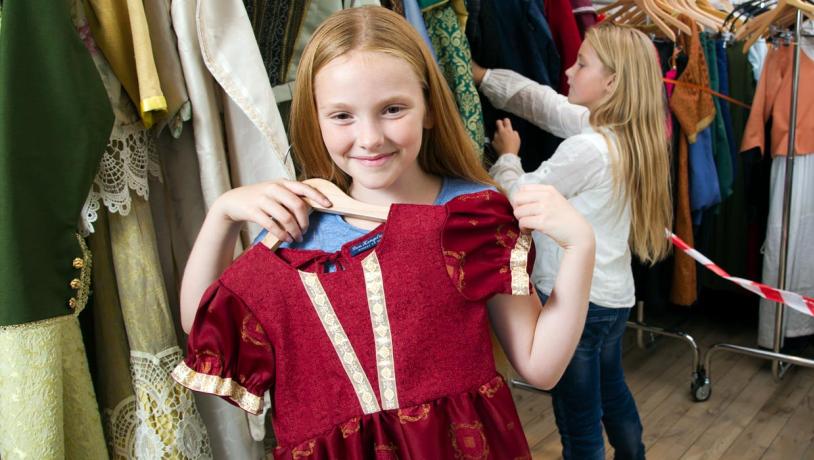
Photo:VisitKolding
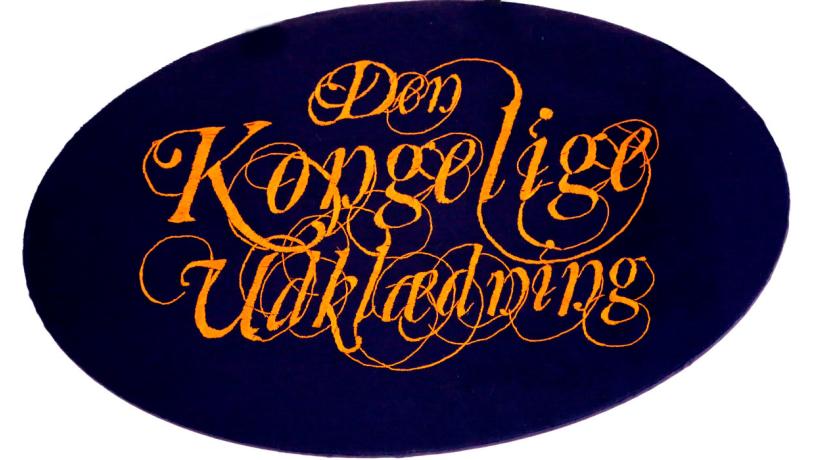
Photo:VisitKolding
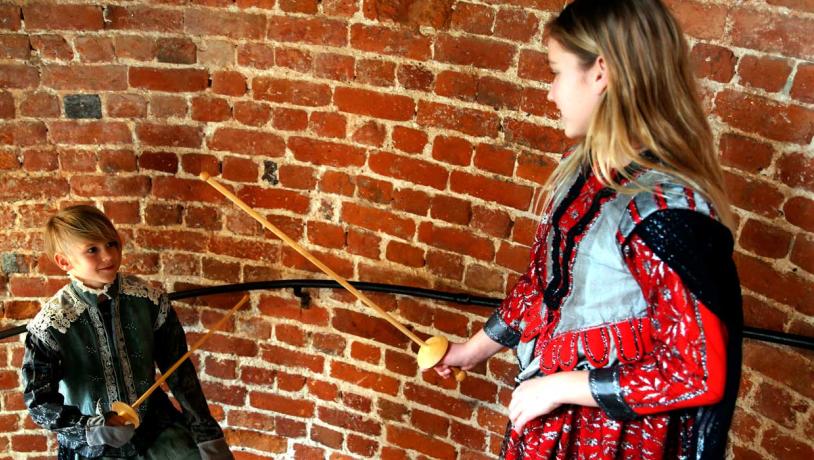
Photo:VisitKolding
The reconstruction of Koldinghus after the fire took a long time - it took over 100 years before the Giant’s Tower was once again at its full height, and the entire castle once again had a roof.
Slotssøen in Kolding
Castle Lake in Kolding
Castle Lake in Kolding was built around 1570 and was the monarch’s property for many years. Therefore, no one was allowed to fish or sail on the lake without the king’s permission. However, there was a small rowboat in case a royal guest wanted a fishing trip. The Love Path is located around Castle Lake and is used frequently. During the summer, free concerts are organised at Castle Lake. There are various activities on Culture Night in August, and the Kolding Light Festival ends every year with a big fireworks display over the lake.
Restaurant Madkælderen at Koldinghus
In the cellar of Koldinghus, Madkælderen serves a large traditional Danish lunch every day with classic homemade dishes. On Thursday, Friday and Saturday, the chef has created a set menu based on exquisite Danish ingredients from small local producers in the area. Enjoy a 4-course menu with matched wines and a fantastic atmosphere. You are welcome to visit Madkælderen without paying admission to the museum.
The Castle Shop at Koldinghus
Whether it’s a keepsake or the perfect gift, the Castle Shop has a large and varied selection of classic souvenirs, Danish design and unique products inspired by current exhibitions and collections. The selection ranges from textiles, jewellery, crafts and local products to traditional souvenirs such as key rings, magnets and Christmas decorations. The shop also has a good selection of books, such as its own series on Danish kings.
With an annual pass to The Royal Danish Collection, you get 10% off the entire range in the shop.
You can visit the castle shop without buying a ticket to Koldinghus.
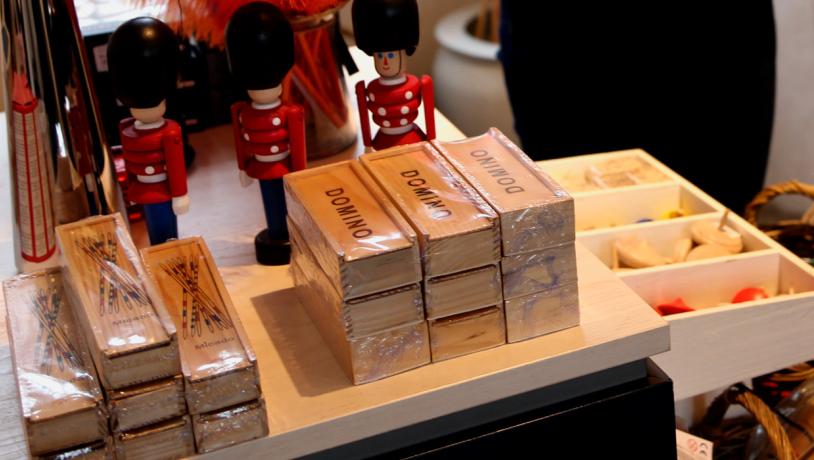
Photo:VisitKolding
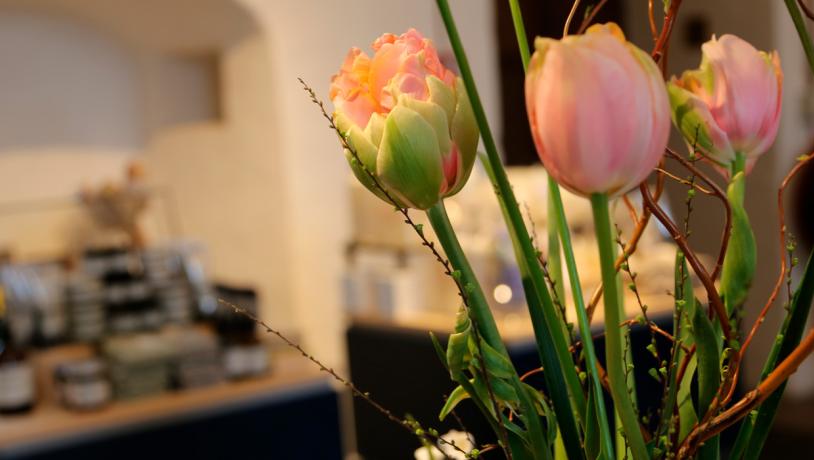
Photo:VisitKolding
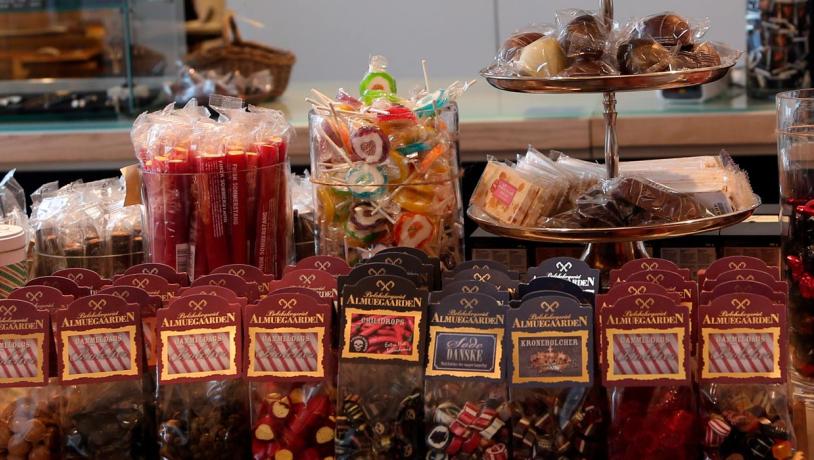
Photo:VisitKolding
Don't miss the chance to experience Koldinghus – one of Denmark's most impressive castles! Dive into fascinating exhibitions, feel the breath of history, and enjoy the spectacular view. Purchase your tickets on the Destination Trekantområdet website now.
Click the image to secure your tickets and make your next outing something truly special. We look forward to welcoming you to Koldinghus – an experience you'll never forget.
Buy tickets here
Koldinghus
6000 Kolding
Longitude: 9.474377
Latitude: 55.491489
